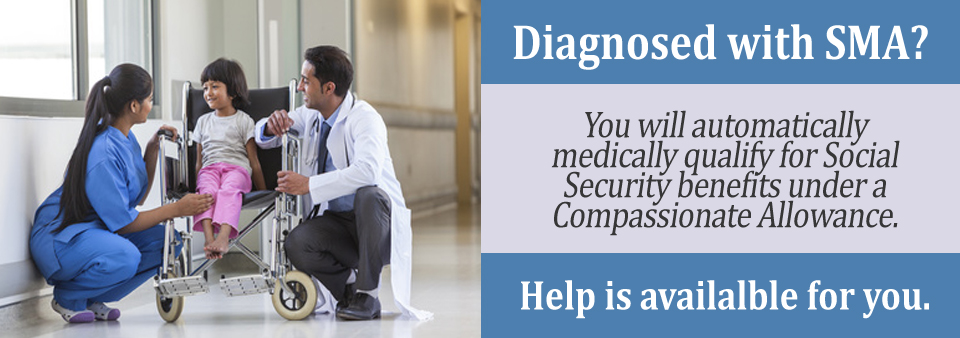Spinal Muscular Atrophy (SMA) can affect anyone. It is the leading genetic cause of death in children under 2 years old and affects up to 1 in every 6,000 people. And yet, many have never even heard of this disease.
August is SMA Awareness Month. To do your part, continue below to learn about SMA and how you can make a difference for those affected.
What is Spinal Muscular Atrophy?
SMA is a genetic disease that affects the nervous system, specifically the parts of the body that control voluntary movement.
It causes the motor neurons within the spinal cord to deteriorate over time, which classifies it as a motor neuron disease. While severity varies from case to case, the majority of those affected by SMA require significant changes to their lifestyle due to the disease.

The main cause of Spinal Muscular Atrophy is a genetic mutation. This mutation affects the production of SMN proteins, which are what help neurons communicate with muscles within the body. Without these SMN proteins, the body slowly loses the ability to move these muscles, resulting in a loss of motor function.
Types of SMA
There are three main types of SMA. Type 1, also known as Werdnig-Hoffman disease, is the most severe. It affects children at the very beginning of life and can cause trouble with sucking, swallowing and breathing. While most children with this diagnosis are only expected to live a few years, modern technology can help prolong their life.
Type 2 is typically found in children 6-18 months old. While it does come with severe complications, those with this diagnosis can live into adulthood. With this type of SMA, muscles gradually lose strength over time, beginning with muscles closest to the center of the body. The largest concerns with this type are a deterioration of breathing muscles, deterioration of swallow-ing muscles, and a curvature of the spine (scoliosis). While this type can not be prevented, life can be prolonged with exercise and care.
Type 3, also known as Kugelberg-Welander disease or mild SMA, begins after 18 months of age. While possible breathing trouble and scoliosis are still worries, many people with this diagnosis can remain walking well into their 30s or 40s. The loss of motor function with this type is much more gradual, and those with the diagnosis often live to late adulthood.
Coping with SMA
Coping with SMA means something different to each person with a diagnosis. The most important step for those affected is to stay alert of their body and continue to take preventative measures for SMA’s side effects. This can mean using a wheelchair, using assistive ventilation, receiving surgery, or taking regular medication. It is also important to stay as active as possible to keep joints and muscles healthy. As with any disease, mental and emotional health is also key when dealing with SMA — a realistic, yet optimistic outlook can have many positive effects on the mind and body.
For those supporting a person with SMA, it is vital to stay informed, stay present, and show understanding. Dealing with a disease such as SMA can be stressful, discouraging, and overwhelming at times — it is the job of those around them to show support, love, and ask what they can do to help. It is also important for supporters to not give in to feelings of helplessness. Sometimes, it can be overwhelming as a loved one to feel like you can’t do anything to help, but showing your love and support can do wonders.
Additional Disability Resources
If you or a loved one has been diagnosed with Spinal Muscular Atrophy, be sure to utilize all resources available to you for help. Firstly, be sure to stay in constant contact with your primary care doctor — nothing is more important than this when staying up-to-date on your diagnosis.
Secondly, consider applying for Social Security disability benefits. Those with Social Security disability insurance (SSDI) can receive monthly bene-fits to compensate for the complications caused by SMA. For more information on Social Security or the application process, you can visit the Social Security Administration’s website or schedule a consultation with a Social Security disability attorney.
Lastly, you can always reach out to others with SMA for support. Websites like curesma.org are full of information on SMA and coping tactics. They also organize get-togethers with others who suffer from the disease and help to raise money for SMA cure research.
This August, do what you can to spread the word about SMA and work towards a better future for those with a diagnosis.